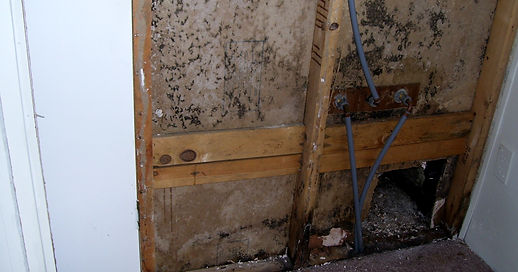
Mold Inspection & Mold Testing Services from Mexico to Malibu, the Pacific to Palm Springs

Mold Inspections & Testing
Simply stated, there are two types of mold warning signs; there are visible signs, and there are not so visible signs. Long before it is ever detected, mold often grows inside walls, ceilings, floors and cabinets. By the time you start smelling an unpleasant odor or seeing a discoloration on a surface, mold has already been growing for some time.
Visible signs of a potential mold problem are stains or discoloration on walls, ceilings, floors, cabinets, and around windows and doors, warped construction materials, doors and windows don't open and close properly, colored fuzzy growth or mushrooms growing on construction materials.
An AMI mold inspection is a non-invasive, visual inspection and moisture assessment. Non-Invasive means we do not cut open walls, tear up floors, rip out cabinets, etc. AMI inspections are technology-based using state-of-the-art equipment such as infrared cameras and moisture detection instruments. Thermal imaging cameras are now the standard by which true IAQ professional investigators are measured. Yet very few mold inspectors use them due to the high cost. Those who do use them typically charge $200 to $500 extra for their inspections. Infrared cameras are used on every AMI inspection at no additional cost to our clients. If your mold inspection is not conducted with an infrared camera, it is inconclusive.

Mold inspections and mold testing are two separate services that work together to identify and locate indoor mold growth. While the inspection focuses on locating suspect conditions, testing focuses on identifying the types of mold present and the concentrations (amounts) of mold spores. There are many ways to test for mold. The most common testing method in a non-invasive inspection is air sampling. Airborne mold spores can indicate what types of molds may be hidden in places you can't see, while the amount of airborne spores in the breathable airspace can help determine potential health risks from exposure.
All AMI mold samples are professionally analyzed at local, accredited laboratories. Scientifically proven analytical data coupled with high tech, non-destructive, professional inspection procedures is why AMI is California's first choice for reliable, accurate mold assessments.
For more information on mold inspections and testing, call 760-845-7789, where you can speak directly with an Inspector to determine the best approach to your situation.
Mold is a natural occurring, living organism outdoors. However, it is never natural to find mold growing indoors. If you have mold growing indoors it is always because of water intrusion or excessive moisture, and indoor mold growth can negatively impact indoor air quality, regardless of what kind of mold it is.
What is mold?
How does mold grow?
Like every living organism, mold needs food and water to grow. Outdoors, food sources can be trees, leaves, grass, garbage, etc. Indoors, food sources can be construction materials and most of your personal belongings. Indoor water sources can be roof leaks, plumbing leaks, tub or toilet overflows, spillage, pet urine, excessive steam and humidity, etc. Not all water intrusion is preventable, but if you can control moisture, you can control mold.
Mold warning signs
What is a mold inspection?
What is mold testing?
Not so visible signs of indoor mold growth include unpleasant odors (oftentimes stronger in some rooms more than others), physical symptoms you experience inside the property that seem to go away when you leave, cold or flu-like symptoms, asthma, allergies, and respiratory infections, increased odors and symptoms during heater or air conditioner use. If you have a compromised immune system, mold can attack your lungs, air passages, skin, organs, eyes and cause a variety of effects. If you suspect you have mold growing indoors, the time to act is sooner rather than later.
